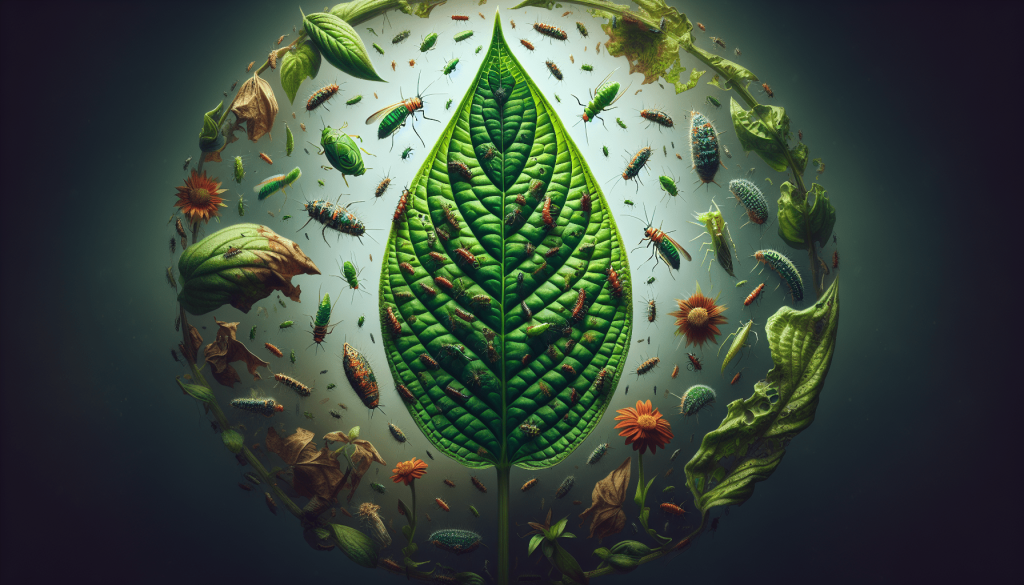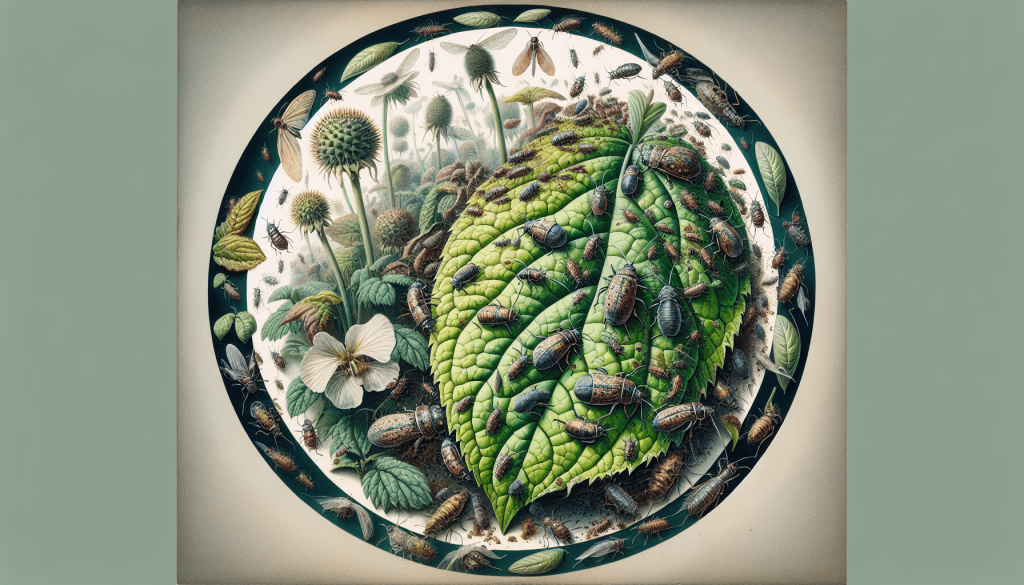This post may contain affiliate links. As an Amazon Associate, we may earn commissions from qualifying purchases.
The Impact Of Climate Change On Garden Pests And Disease Patterns” delves into how shifting weather conditions are transforming the way you garden. As climate change alters temperatures and precipitation patterns, you’re likely to notice that pests and diseases are behaving differently in your cherished green spaces. This insightful article explores the effects of these changes, helping you understand what to expect and offering practical tips to keep your garden thriving despite these new challenges. Have you noticed your garden seems a bit different each year, with new pests wreaking havoc or plants suffering from unexpected diseases? You’re not alone. The climate is changing, and these alterations in our environment have significant impacts on garden pests and disease patterns. Let’s dig deeper into how these shifts might be affecting your green sanctuary.
Understanding Climate Change
Climate change refers to long-term shifts in temperatures and weather patterns. While these shifts can be natural, human activities have been the primary driver in recent times, mainly due to the burning of fossil fuels like coal, oil, and gas. The result is a significant increase in greenhouse gases like carbon dioxide in our atmosphere, leading to global warming.
How Climate Change Affects Your Garden
Your garden is an ecosystem of its own, interlinked with the broader environment. Shifts in temperature and weather patterns affect every aspect of your garden, from blooming times to pest behavior. The impacts of these changes are often multifaceted and can bring both challenges and opportunities for gardeners.
The Influence of Climate Change on Garden Pests
Pests have always been a concern for gardeners, but climate change introduces new dynamics that may exacerbate the problem. Warmer temperatures, altered precipitation patterns, and even changes in wind patterns can affect pest proliferation and distribution.
Temperature Changes and Pest Activity
Warmer temperatures can accelerate the life cycles of many pests, leading to more frequent and severe infestations. For instance, insects like aphids and spider mites reproduce more rapidly in warmer conditions, potentially turning a small problem into a larger infestation quickly.
| Pest | Effect of Warmer Temperatures |
|---|---|
| Aphids | Faster reproduction, leading to more infestations |
| Spider Mites | Increased activity, faster population growth |
| Mosquitoes | Extended breeding season |
Altered Precipitation Patterns
Climate change is not just about warming; it’s also about changing precipitation patterns. Some regions may experience more rainfall, while others may suffer from drought. Both extremes can influence pest populations differently.
Increased Rainfall
Increased moisture can create ideal conditions for pests like slugs and snails, which thrive in damp environments. Meanwhile, standing water from heavy rains can become breeding grounds for mosquitoes.
Drought Conditions
On the other hand, drought can weaken plants, making them more susceptible to pests that target stressed vegetation. For example, drought conditions can make plants more inviting to root-feeding insects like grubs.
Wind Patterns and Pest Migration
Changes in wind patterns can influence how pests travel. Stronger winds can carry pests to new areas they previously didn’t infest. This can introduce new challenges to your garden as you might see unfamiliar pests that your plants have no natural defense against.

The Impact of Climate Change on Plant Diseases
Just like pests, plant diseases are influenced by climate conditions. These diseases, caused by bacteria, fungi, or viruses, can become more problematic as the climate shifts.
Warm and Humid Conditions
Many plant pathogens thrive in warm, humid conditions. Climate models predict longer periods of such weather in many parts of the world, potentially leading to a rise in plant diseases.
| Plant Disease | Ideal Conditions | Potential Impact |
|---|---|---|
| Powdery Mildew | Warm, dry days and cool nights | Increased spread |
| Downy Mildew | Cool, moist conditions | More outbreaks |
| Phytophthora Blight | Warm, wet conditions | Severe infestations |
Altered Growing Seasons
Climate change can also alter the growing seasons, leading to overlapping periods of plant vulnerability and pathogen activity. For example, earlier springs can lead to an advancement in the lifecycle of pathogens, making them more synchronized with plant growth stages.
Changing Disease Vectors
Some plant diseases are spread by insects, which are also affected by climate change. For instance, the increased presence of aphids due to warmer temperatures can lead to a greater incidence of diseases those aphids transmit, such as mosaic viruses.
Managing Pests and Diseases in a Changing Climate
Understanding these impacts is the first step towards managing your garden more effectively. The next step is implementing strategies that can help protect your plants.
Monitoring and Early Detection
Regular monitoring is crucial. Keep a close eye on your plants and be on the lookout for early signs of pests and diseases. Early detection can often prevent a small problem from becoming a major infestation.
Diversified Planting
Diverse planting can help reduce the spread and impact of pests and diseases. Mixed plantings can create a more complex environment, making it harder for pests to find their preferred host and spread to other plants.
Resistant Varieties
Planting pest and disease-resistant varieties can significantly reduce your vulnerability. Many modern cultivars are bred specifically for resistance to common problems, giving you a head start in the battle against garden invaders.
Proper Water Management
Managing water in your garden can help mitigate some impacts of climate change. Ensure good drainage to avoid the stagnant water that breeds pests. Conversely, provide adequate water during dry periods to keep plants healthy and less susceptible to pests.
Natural Predators
Encouraging beneficial insects and natural predators can help keep pest populations in check. Ladybugs, for instance, are voracious aphid eaters, and introducing them or other beneficial insects to your garden can reduce pest numbers naturally.
| Beneficial Insect | Targeted Pest |
|---|---|
| Ladybugs | Aphids |
| Praying Mantises | Various garden pests |
| Parasitic Wasps | Caterpillar pests |
Sustainable Practices
Using organic and sustainable gardening practices can also make a big difference. Chemical pesticides and fertilizers often provide a short-term fix but can lead to long-term problems, such as resistance in pests. Consider using compost and organic mulches to improve soil health and water retention.

Resilience and Adaptation
Building resilience in your garden involves adapting to the new challenges posed by climate change. Here are some additional strategies to consider:
Flexible Schedules
Be prepared to adjust your gardening schedule to match changing seasonal patterns. This might mean planting earlier due to warmer springs or harvesting sooner if hot, dry summers are becoming the norm in your area.
Mulching
Using organic mulches can help regulate soil temperature and moisture levels, making your plants less prone to the stress that attracts pests and promotes disease.
Integrated Pest Management (IPM)
Adopt Integrated Pest Management techniques, which include using a combination of methods such as biological controls, cultural practices, and mechanical tools to control pests and diseases in an environmentally friendly way.
| IPM Method | Description |
|---|---|
| Biological Controls | Using natural predators |
| Cultural Practices | Crop rotation, intercropping |
| Mechanical Tools | Hand-picking, traps |
| Chemical Controls | Organic pesticides as a last resort |
Case Study: The Tomato Garden
To illustrate how climate change can impact a typical garden, let’s consider a small tomato garden.
Scenario
You have a tomato garden that has provided you with bountiful harvests each summer. However, over the last few years, you’ve noticed an increase in pests like aphids and diseases such as late blight.
Observations
- Warmer Springs: Resulted in earlier planting, which seemed beneficial at first but also meant a longer growing season for pests.
- Humidity Spikes: Increased the incidence of fungal diseases, particularly during mid-summer.
- Drier Late Summers: Stressed plants, making them more attractive to pests.
Response
- Early Detection: Regularly inspected plants and identified the onset of aphid infestations early.
- Resistant Varieties: Switched to blight-resistant tomato varieties.
- Cultural Practices: Implemented crop rotation and avoided planting tomatoes in the same spot year after year.
- Natural Predators: Introduced ladybugs and parasitic wasps to control aphids naturally.
- Proper Watering: Used drip irrigation to maintain consistent soil moisture levels without wetting the foliage.
Outcome
By adopting these measures, you managed to reduce the prevalence of pests and diseases significantly, ensuring healthier plants and better harvests despite changing climate conditions.
Conclusion
Climate change undeniably impacts garden pests and disease patterns, altering the landscape for gardeners everywhere. However, with awareness and proactive strategies, you can mitigate these effects and continue to enjoy a flourishing garden. Embrace sustainable practices, stay vigilant, and adapt to the shifting climate to keep your green space vibrant and productive. Happy gardening!








